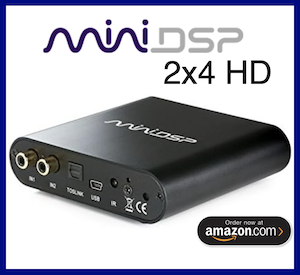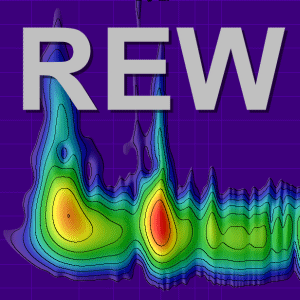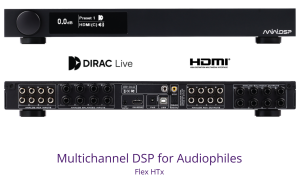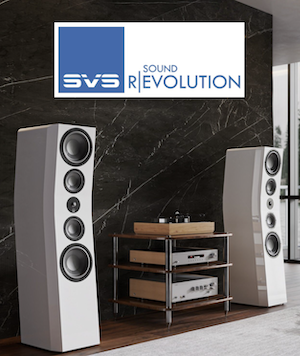-
AUDIO VIDEO PROCESSING, SETUP & ENVIRONMENTOfficial REW (Room EQ Wizard) Support Forum Audiolense User Forum Calibration Equipment Auto-EQ Platforms / Immersive Audio Codecs Video Display Technologies / Calibration AV System Setup and Support Listening Room / Home Theater Build Projects Room Acoustics and Treatments AV Showcase Movies / Music / TV / Streaming
-
AUDIO VIDEO DISCUSSION / EQUIPMENTHome Theater / Audio and Video - Misc Topics Essence For Hi Res Audio AV Equipment Advice and Pricing Awesome Deals and Budget AV Equipment AV Receivers / Processors / Amps UHD / Blu-ray / CD Players / Streaming Devices Two Channel Hi-Fi Equipment DIY Audio Projects Computer Systems - HTPC / Gaming HD and UHD Flat Screen Displays Projectors and Projection Screens AV Accessories Buy - Sell - Trade
Navigation
Install the app
How to install the app on iOS
Follow along with the video below to see how to install our site as a web app on your home screen.
Note: This feature may not be available in some browsers.
More options
You are using an out of date browser. It may not display this or other websites correctly.
You should upgrade or use an alternative browser.
You should upgrade or use an alternative browser.
Difference between"RMS average" and "vector average"
- Thread starter Alpi
- Start date
John Mulcahy
REW Author
- Joined
- Apr 3, 2017
- Posts
- 9,048
From the All SPL graph help:
- RMS average, which calculates an rms average of the SPL values of those traces which are selected when the button is pressed. This does the same as the Average The Responses button, the dB values are converted to linear magnitudes, those magnitudes are then squared, summed and divided by the number of measurements, the square root of the result is taken, then the value is converted back to dB. Phase is not taken into account, measurements are treated as incoherent. If only a single trace is selected the result has the magnitude data from the source measurement and no phase data. If the measurements were made at different positions (spatial averaging) it is usually best to first use the Align SPL... feature to remove overall level differences due to different source distances. When measurements with distortion data are averaged their distortion data is also averaged, providing the data cover the same frequency range at the same resolution.
- dB average, which averages the dB SPL values of the currently selected traces. This produces results that are closer to what one might intuitively expect from looking at the traces, but gives equal weight to peaks and dips which masks the magnitude difference between them. For example, a +20 dB peak has a magnitude that is 100 times larger than a -20 dB dip. dB averaging them produces 0 dB, 10 times smaller than the peak and 10 times larger than the dip. dB averaging may be useful when averaging smoothed traces to derive an EQ target, with unsmoothed data the dips would have a disproportionate effect on the result. When measurements with distortion data are averaged their distortion data is also averaged, providing the data cover the same frequency range at the same resolution.
- Vector average, which averages the currently selected traces taking into account both magnitude and phase. It can only be applied to measurements that have an impulse response and is most appropriate for multiple measurements taken from the same position, or measurements which have been time and level aligned before averaging them. When measurements with distortion data are averaged using Vector average their distortion data is also averaged, providing the measurements were made at the same sample rate and with the same sweep settings.
- RMS + phase avg. and dB + phase avg., which produce an RMS or dB average of the magnitudes and use vector average for the phases. They can only be applied to measurements that have an impulse response. Both are appropriate for multiple measurements of a source. Measurements should be time and level aligned before averaging them, cross correlation alignment is recommended for the time alignment. These averaging methods do not exhibit the magnitude dips due to phase cancellations that can occur with vector averaging. The resulting impulse response may have significant acausal content as the relationship between magnitude and phase that would normally hold is broken. As a result the average requires larger left windows than usual. The effects of any calibration files of the individual measurements are merged into the resulting impulse response.
I am recently working a lot with REW (wonderful tool!) and use the EQ functionality a lot. I usually take multiple measurements and correct timing and SPL when necessary. I am not sure, what averaged measurements are the best to calculate proper EQ values in REW. db average is named as a candidate but has no phase information. As far as I know, REW can take phase information into account when computing the Filters (trying to produce minimum-phase filters). Following observations when trying to compute filters for L+R:
- when I use vector average between L and R, I basically get the same frequency response as an L+R measurement. IMHO, this provides a good basis to calculate filters with REW EQ
- when I use vector average for multiple measurements of one speaker, the frequency response drops in the highs. IMHO, this does not provide a good basis to calculate filters
Putting the information together, I assume that following workflow makes most sense when having multiple L and R measurements
- time align and SPL align all L measurements and then do a dB + phase avg. => result is an averaged L with phase information (L-dB)
- do the same for all R measurements => result is an averaged R with phase information (R-dB)
- do vector average with L-dB and R-dB => result is a "realistic" averaged L+R with phase information (L+R-VA)
- use L+R-VA to compute the filters
Is this correct? Did I miss something important? I did some research which left me confused, since different people use very different approaches (e.g. using only "Average the Responses" or only "Vector Average").
- when I use vector average between L and R, I basically get the same frequency response as an L+R measurement. IMHO, this provides a good basis to calculate filters with REW EQ
- when I use vector average for multiple measurements of one speaker, the frequency response drops in the highs. IMHO, this does not provide a good basis to calculate filters
Putting the information together, I assume that following workflow makes most sense when having multiple L and R measurements
- time align and SPL align all L measurements and then do a dB + phase avg. => result is an averaged L with phase information (L-dB)
- do the same for all R measurements => result is an averaged R with phase information (R-dB)
- do vector average with L-dB and R-dB => result is a "realistic" averaged L+R with phase information (L+R-VA)
- use L+R-VA to compute the filters
Is this correct? Did I miss something important? I did some research which left me confused, since different people use very different approaches (e.g. using only "Average the Responses" or only "Vector Average").
John Mulcahy
REW Author
- Joined
- Apr 3, 2017
- Posts
- 9,048
REW only looks at the response magnitude when generating filters.
Thanks a lot. Phase (Minimum Phase) is no factor in the computation. As long as I only want to generate one EQ set for the stereo output of the speaker, I am probably safest to use L+R measurements as the basis. If using several measurements around the listening position, I will average them in a way, that keeps the resulting measurement in amplitute average of the input measurement (which is often not the case with Vector Average).
pmar4015
New Member
- Joined
- Apr 6, 2022
- Posts
- 19
More
- Preamp, Processor or Receiver
- Denon 8500HA
- Main Amp
- 3 Outlaw Audio 2220 (powering Main L/R/C)
- Additional Amp
- None
- Other Amp
- None
- DAC
- Internal - Denon 8500HA
- Computer Audio
- None
- Universal / Blu-ray / CD Player
- Sony UBP- X700/M 4K Ultra HD Home Theater
- Streaming Equipment
- Apple TV 4K (2021 Model/2nd Generation)
- Streaming Subscriptions
- Apple Music; HBOMAX; Disney; Showtime; STARZ;Hulu; Paramount Plus; Netflix
- Front Speakers
- Revel Proforma3 F208
- Front Wide Speakers
- None
- Center Channel Speaker
- Klipsch R-5800-W II (behind an AT screen)
- Surround Speakers
- ELAC Debut 2.0 OW4.2
- Surround Back Speakers
- Dayton Audio MK442T
- Front Height Speakers
- Top Front L/R: Revel IW65
- Rear Height Speakers
- Klipsch AW-400
- Subwoofers
- SVS PB-1000 (4 of these)
- Other Speakers
- Gaming: XBOX X; Blu-ray Player: Sony UBP- X700(M)
- Screen
- 106” Perforated/Acoustically Transparent
- Video Display Device
- Sony VPL-VW325ES
- Other Equipment
- Hardware DSP: MiniDSP 2X4 HD (Managing 4 subs)/Software DSP: MultEQ-X
Curious as to what approach to averaging you ended up using? For a 2.1 setup using a MacMini as my source and a MiniDSP 2X4HD as my EQ device (along with a separate amplifier) what I ended up doing was:Thanks a lot. Phase (Minimum Phase) is no factor in the computation. As long as I only want to generate one EQ set for the stereo output of the speaker, I am probably safest to use L+R measurements as the basis. If using several measurements around the listening position, I will average them in a way, that keeps the resulting measurement in amplitute average of the input measurement (which is often not the case with Vector Average).
1) Using the generator/SPL meter found in REW, l separately level matched each of the speakers (i.e. left speaker/right speaker/subwoofer).
2) Using a sine sweep (with an acoustical timing reference) for each of the Left and Right speakers (using only one microphone position) I determined the appropriate delay values in order to time align the left speaker with the right speaker
3) Using the RTA/Moving Mic approach I took measurements of both the Left Speaker with the sub energized as well as the the Right Speaker with the sub energized (not together (i.e. L+R) but rather separately).
4) I then aligned the SPL of each measurement and took a RMS average of the two measurements for purposes of creating the AutoEQ filters in REW
5) I then played around with the delay values for the subwoofer in order to achieve the smoothest possible transition at the crossover frequency (in my case 100Hz).
Not sure if this is the best approach? For instance perhaps taking 3-5 measurements of the Left+Sub and, separately, the Right+Sub for a total of 6-10 measurements (using a sine sweep as opposed to the moving mic method) of each speaker and then using cross correlation alignment (and maybe SPL alignment?) in conjunction with a RMS average (or perhaps a Vector average?) may be preferred?
At the end of the day, I would love to know what the recommended approach/workflow is? Given the multitude of choices of averaging/cross correlation/SPL alignment, etc. I just can't figure out the ideal workflow for purposes of EQing a 2.1 setup.
Many thanks
pmar4015
New Member
- Joined
- Apr 6, 2022
- Posts
- 19
More
- Preamp, Processor or Receiver
- Denon 8500HA
- Main Amp
- 3 Outlaw Audio 2220 (powering Main L/R/C)
- Additional Amp
- None
- Other Amp
- None
- DAC
- Internal - Denon 8500HA
- Computer Audio
- None
- Universal / Blu-ray / CD Player
- Sony UBP- X700/M 4K Ultra HD Home Theater
- Streaming Equipment
- Apple TV 4K (2021 Model/2nd Generation)
- Streaming Subscriptions
- Apple Music; HBOMAX; Disney; Showtime; STARZ;Hulu; Paramount Plus; Netflix
- Front Speakers
- Revel Proforma3 F208
- Front Wide Speakers
- None
- Center Channel Speaker
- Klipsch R-5800-W II (behind an AT screen)
- Surround Speakers
- ELAC Debut 2.0 OW4.2
- Surround Back Speakers
- Dayton Audio MK442T
- Front Height Speakers
- Top Front L/R: Revel IW65
- Rear Height Speakers
- Klipsch AW-400
- Subwoofers
- SVS PB-1000 (4 of these)
- Other Speakers
- Gaming: XBOX X; Blu-ray Player: Sony UBP- X700(M)
- Screen
- 106” Perforated/Acoustically Transparent
- Video Display Device
- Sony VPL-VW325ES
- Other Equipment
- Hardware DSP: MiniDSP 2X4 HD (Managing 4 subs)/Software DSP: MultEQ-X
Bumping this upCurious as to what approach to averaging you ended up using? For a 2.1 setup using a MacMini as my source and a MiniDSP 2X4HD as my EQ device (along with a separate amplifier) what I ended up doing was:
1) Using the generator/SPL meter found in REW, l separately level matched each of the speakers (i.e. left speaker/right speaker/subwoofer).
2) Using a sine sweep (with an acoustical timing reference) for each of the Left and Right speakers (using only one microphone position) I determined the appropriate delay values in order to time align the left speaker with the right speaker
3) Using the RTA/Moving Mic approach I took measurements of both the Left Speaker with the sub energized as well as the the Right Speaker with the sub energized (not together (i.e. L+R) but rather separately).
4) I then aligned the SPL of each measurement and took a RMS average of the two measurements for purposes of creating the AutoEQ filters in REW
5) I then played around with the delay values for the subwoofer in order to achieve the smoothest possible transition at the crossover frequency (in my case 100Hz).
Not sure if this is the best approach? For instance perhaps taking 3-5 measurements of the Left+Sub and, separately, the Right+Sub for a total of 6-10 measurements (using a sine sweep as opposed to the moving mic method) of each speaker and then using cross correlation alignment (and maybe SPL alignment?) in conjunction with a RMS average (or perhaps a Vector average?) may be preferred?
At the end of the day, I would love to know what the recommended approach/workflow is? Given the multitude of choices of averaging/cross correlation/SPL alignment, etc. I just can't figure out the ideal workflow for purposes of EQing a 2.1 setup.
Many thanks
Popular tags
20th century fox
4k blu-ray
4k uhd
4k ultrahd
action
adventure
animated
animation
bass
blu-ray
calibration
comedy
comics
denon
dirac
dirac live
disney
dolby atmos
drama
fantasy
hdmi 2.1
home theater
horror
kaleidescape
klipsch
lionsgate
marantz
movies
onkyo
paramount
pioneer
rew
romance
sci-fi
scream factory
shout factory
sony
stormaudio
subwoofer
svs
terror
thriller
uhd
ultrahd
ultrahd 4k
universal
value electronics
warner
warner brothers
well go usa














